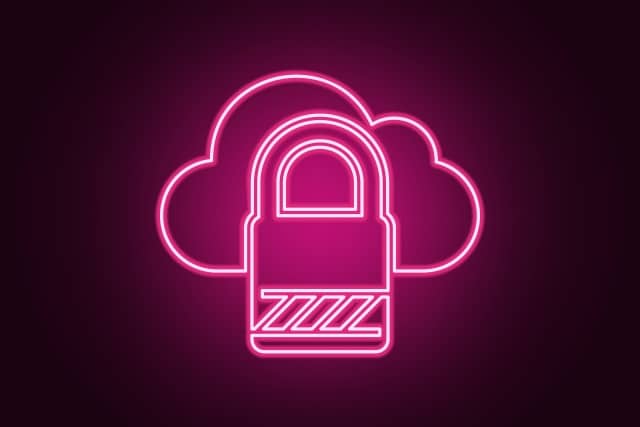
Companies continue to struggle with privileged access management
Privileged accounts can be a headache for organizations so you'd expect managing them to be a high priority for security teams. However, a new report from Thycotic reveals that 85 percent fail to achieve even basic privileged security hygiene.
In addition 55 percent have no idea how many privileged accounts they have or where they’re located, while over 50 percent of their privileged accounts never expire or get deprovisioned.

Microsoft's core platform isn't software, it's trust
For the first time in a half-decade, I watched a Microsoft Build keynote this morning. Time gives fresh perspective, looking at where the company was compared to where it is today. Listening to CEO Satya Nadella and other Softies, I repeatedly found myself reminded of Isaac Asimov's three laws or Robotics and how they might realistically be applied in the 21st Century. The rules, whether wise or not, set to ensure that humans could safely interact with complex, thinking machines. In Asimov's science fiction stories, the laws were core components of the automaton's brain—baked in, so to speak, and thus inviolable. They were there by design; foundationally.
Behind all product design, there are principles. During the Steve Jobs era, simplicity was among Apple's main design ethics. As today's developer conference keynote reminds, Microsoft embraces something broader—design ethics that harken back to the company's founding objectives and others that share similar purpose as the robotic laws. On the latter point, Nadella repeatedly spoke about "trust" and "collective responsibility". These are fundamental principles of design, particularly as Artificial Intelligence usage expands and more corporate developers depend on cloud computing platforms like Azure.

IBM uses technology to help hurricane-hit communities
To mark the start of US National Hurricane Preparedness Week this week, The Weather Company, an IBM Business, is releasing not just its 2019 hurricane forecast, but also analytic data that looks at how weather affects preparedness, emotion and consumer habits.
In addition, through its Code and Response deployment initiative which aims to put open source technologies to use for social good, IBM is taking action to help save the lives of people in communities that are vulnerable to natural disasters.

Digital transformation is putting government data at risk
The push towards digital transformation in the US government is putting sensitive data at risk, according to a new report from data protection specialist Thales.
Almost all (98 percent) of respondents from federal agencies report that they are using sensitive data within digital transformation technology environments. Yet, less than a third of respondents are using data encryption within these environments.

New Arcserve release helps protect hybrid environments
With the launch of its latest Unified Data Protection (UDP) product, backup specialist Arcserve is aiming to remove the multiple points of failure typically introduced into IT environments through a piecemeal, 'do-it-yourself' approach to data backup and disaster recovery.
Using an image-based technology, the new Arcserve UDP extends proven backup and DR technologies to protect every type of workload, including Nutanix AHV and Microsoft Office 365.

What is fueling container and multicloud adoption? [Q&A]
Containers and cloud native applications are transforming how quickly and reliably organizations can bring ideas to market, while also providing the key building blocks for multicloud strategies.
But for all the speed, agility, and elasticity these technologies promise, they also create a complexity tipping point. Across industries, IT staff looking to deliver on the benefits of container and multicloud strategies -- without being overwhelmed by complexity -- are increasingly turning towards workload automation.

Personal details of 80 million US households exposed on unsecured Microsoft cloud server
Security researchers have discovered an unprotected database stored on a Microsoft cloud server. The 24GB database includes personal information about 80 million households across the US.
The researchers from vpnMentor were working on a web mapping project when they made the discovery. They say that as the database they found left out in the open relates to American households which include multiple residents, the data breach could potentially affect hundreds of millions of people.

Microsoft, Dell and VMware become partners in the cloud
Microsoft has announced that it is extending its partnership with Dell in a move that will enable Microsoft Azure customers to take advantage of VMware virtualization in the cloud.
The company is also bringing VMware into the Microsoft 365 ecosystem to extend the capabilities of its Windows Virtual Desktop too. It will also bring new management and security options to Microsoft Intune.

3 document management takeaways from Google Cloud Next 2019
In early April, more than 30,000 attendees gathered in San Francisco at Google Cloud Next to hear a variety of new announcements and innovations as told through product reveals, break-out sessions and keynote speakers. Included in the long list of what’s to come were several key features that will substantially impact document management on G Suite.
I’ve narrowed down that information into the following three main takeaways regarding document management and business processes:

More than half of companies have sensitive files open to all employees
The latest data risk report from security company Varonis reveals that 53 percent of companies have at least 1,000 sensitive files open to all employees, putting them at risk of data breaches.
Keeping old sensitive data that risks fines under HIPAA, GDPR and the upcoming CCPA is a problem too. The report finds over half of data is stale and 87 percent of companies have over 1,000 stale sensitive files, with 71 percent having over 5,000 stale sensitive files.

Empowering the channel to make a success of cloud
In the fast-paced world of the IT channel, choosing the right partner can make or break a business. In an ideal world, the partnership delivers a result that’s greater than the sum of its parts -- after all that’s the whole point of the channel. A successful partnership should mean that customers benefit from outstanding technology, service and support, which in turn brings the partners sustained revenues and opportunities to grow sales. So often, however, partner selection is rushed and it’s unclear how the businesses will work to align their expertise and create a genuinely compelling proposition for customers.
Ineffective partnerships are a real threat to success, and that’s why we’re seeing a real push among Cloud Service Providers (CSPs) towards strategies to empower the channel and recognition that the first steps are selecting the right partners, followed by proactive investment in the ongoing relationship.

Virtual support agent streamlines service desk management
One of the biggest challenges for service desk teams is striking the right balance between business-critical projects and keeping up with everyday problems and requests.
To help relieve this problem, ManageEngine, the IT management division of Zoho, is incorporating Zia, Zoho's AI assistant, as a virtual IT support agent in its cloud-based service desk software, ServiceDesk Plus.

Cloud-to-cloud migrations: Making the user experience seamless through coexistence
A survey published by Gartner in August 2018 found 25 percent of public companies have transitioned to a cloud email platform, with those rates even higher among private companies and SMBs. Now that so many businesses have migrated from on-premises applications to the cloud, the market is now seeing a sharp uptick in the number of cloud-to-cloud migrations, reaching parity and even surpassing on-prem to cloud moves.
One of the biggest drivers of cloud-to-cloud migrations are mergers, acquisitions and divestitures. In this scenario, the buyer needs to merge those new users and data into their environment. In the likely chance the business is running Office 365, this would require performing a tenant to tenant (T2T) migration of workloads including mailboxes, OneDrive or SharePoint instances, personal archives or Personal Storage Tables (PSTs), and any other data associated with users the cloud office suite.

New platform helps search and analysis of cloud-stored data
As companies store ever larger amounts of data, the current solutions and services available to handle it become more and more costly and difficult to manage.
To address these challenges, Boston-based CHAOSSEARCH is launching a new platform that delivers rapid search and analytics through a managed service, based on simple, elastic storage.

Securing serverless computing, the latest cloud paradigm [Q&A]
The cloud-skills shortage has made security a major challenge for enterprises. In fact, virtually every data breach in the cloud today is due to human error, rather than brilliant hacking. Hackers don't even bother launching attacks in the public cloud; they simply look for misconfigured systems that leave data exposed.
Against this backdrop, a whole new cloud model is taking hold -- serverless computing. In a world where cloud certifications and security skills are already in short supply and causing chaos in the cloud, what will serverless computing do to compound that problem for enterprises? Is it possible for organizations to avoid making the same mistakes with this new paradigm that they are making in traditional cloud environments?
